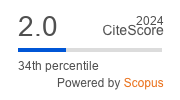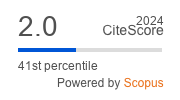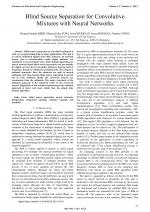| 1/2011 - 10 |
Blind Source Separation for Convolutive Mixtures with Neural NetworksKIREI, B. S. |
| Extra paper information in |
| Click to see author's profile in |
| Download PDF |
Author keywords
blind source separation, neural networks, independent component analysis, subband analysis and synthesis
References keywords
separation(17), blind(14), source(12), topa(10), processing(10), marina(10), audio(10), signal(9), telecommunications(7), speech(7)
Blue keywords are present in both the references section and the paper title.
About this article
Date of Publication: 2011-02-27
Volume 11, Issue 1, Year 2011, On page(s): 63 - 68
ISSN: 1582-7445, e-ISSN: 1844-7600
Digital Object Identifier: 10.4316/AECE.2011.01010
Web of Science Accession Number: 000288761800010
SCOPUS ID: 79955960740
Abstract
Blind source separation of convolutive mixtures is used as a preprocessing stage in many applications. The aim is to extract individual signals from their mixtures. In enclosed spaces, due to reverberation, audio signal mixtures are considered to be convolutive ones. Time domain algorithms (as neural network based blind source separation) are not suitable for signal recovery from convolutive mixtures, thus the need of frequency domain or subband processing arise. We propose a subband approach: first the mixtures are split to several subbands, next time-domain blind source separation is carried out in each subband, finally the recovered sources are recomposed from the subbands. The major drawback of the subband approach is the unknown order of the recovered sources. Regardless of this undesired phenomenon the subband approach is faster and more stable than the simple time domain algorithm. |
| References | | | Cited By |
Web of Science® Times Cited: 4 [View]
View record in Web of Science® [View]
View Related Records® [View]
Updated today
SCOPUS® Times Cited: 4
View record in SCOPUS® [Free preview]
View citations in SCOPUS® [Free preview]
[1] An Adaptive Sparse Algorithm for Synthesizing Note Specific Atoms by Spectrum Analysis, Applied to Music Signal Separation, AZAMIAN, M., KABIR, E., SEYEDIN, S., MASEHIAN, E., Advances in Electrical and Computer Engineering, ISSN 1582-7445, Issue 2, Volume 17, 2017.
Digital Object Identifier: 10.4316/AECE.2017.02014 [CrossRef] [Full text]
[2] Convolution separation and application of joint diagonalization with optimal parameters on mechanical signals, Zhang, Yuanyuan, Xin, Jianghui, Journal of Vibroengineering, ISSN 1392-8716, Issue 8, Volume 23, 2021.
Digital Object Identifier: 10.21595/jve.2021.21961 [CrossRef]
[3] Binary spectral masking for speech recognition systems, Versiani, Thiago de Souza Siqueira, Rodrigues, Gustavo Fernandes, Souza, Ana Claudia Silva de, Moreira, Jussara de Matos, Yehia, Hani Camille, 2012 35th International Conference on Telecommunications and Signal Processing (TSP), ISBN 978-1-4673-1118-2, 2012.
Digital Object Identifier: 10.1109/TSP.2012.6256330 [CrossRef]
Disclaimer: All information displayed above was retrieved by using remote connections to respective databases. For the best user experience, we update all data by using background processes, and use caches in order to reduce the load on the servers we retrieve the information from. As we have no control on the availability of the database servers and sometimes the Internet connectivity may be affected, we do not guarantee the information is correct or complete. For the most accurate data, please always consult the database sites directly. Some external links require authentication or an institutional subscription.
Web of Science® is a registered trademark of Clarivate Analytics, Scopus® is a registered trademark of Elsevier B.V., other product names, company names, brand names, trademarks and logos are the property of their respective owners.
Faculty of Electrical Engineering and Computer Science
Stefan cel Mare University of Suceava, Romania
All rights reserved: Advances in Electrical and Computer Engineering is a registered trademark of the Stefan cel Mare University of Suceava. No part of this publication may be reproduced, stored in a retrieval system, photocopied, recorded or archived, without the written permission from the Editor. When authors submit their papers for publication, they agree that the copyright for their article be transferred to the Faculty of Electrical Engineering and Computer Science, Stefan cel Mare University of Suceava, Romania, if and only if the articles are accepted for publication. The copyright covers the exclusive rights to reproduce and distribute the article, including reprints and translations.
Permission for other use: The copyright owner's consent does not extend to copying for general distribution, for promotion, for creating new works, or for resale. Specific written permission must be obtained from the Editor for such copying. Direct linking to files hosted on this website is strictly prohibited.
Disclaimer: Whilst every effort is made by the publishers and editorial board to see that no inaccurate or misleading data, opinions or statements appear in this journal, they wish to make it clear that all information and opinions formulated in the articles, as well as linguistic accuracy, are the sole responsibility of the author.



